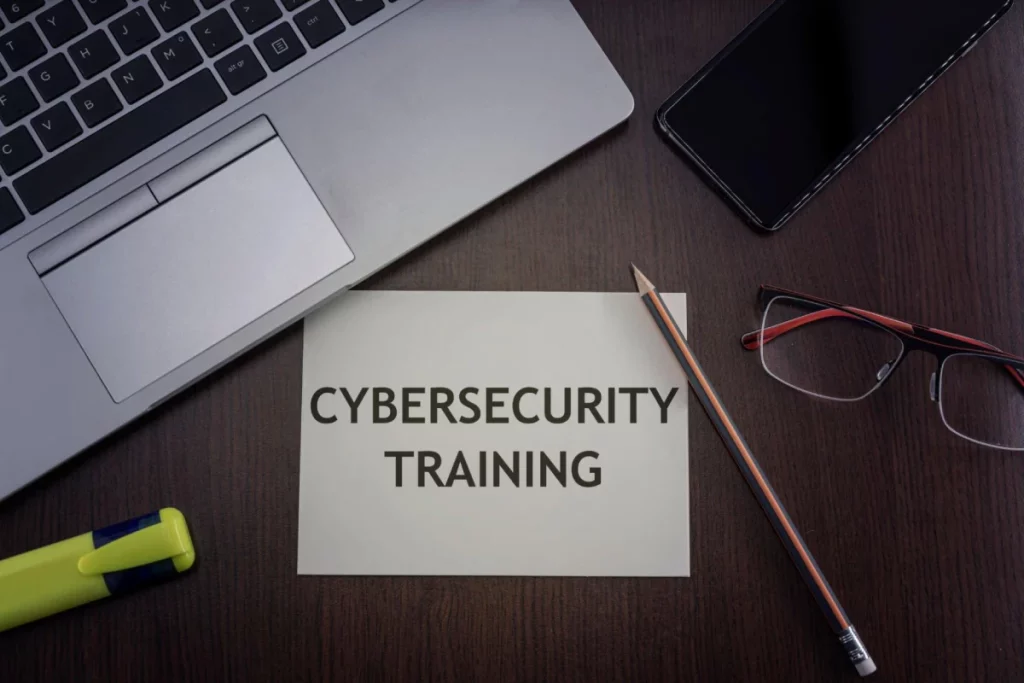In today’s digitally interconnected world, protecting your business goes beyond the installation of traditional security measures. Cyber threats loom large and are evolving at an unprecedented pace. One of the most critical defenses is often overlooked – training employees in security awareness. It’s about instilling a mindset that makes security a priority in every action taken. Let’s delve deeper into the vital elements needed for an effective security awareness training program.
Table of Contents
Understanding the Threat Landscape
The landscape of cyber threats is vast and intricate. It encompasses various attack vectors, from phishing attempts to sophisticated malware and social engineering tactics. It’s crucial to portray the real-world implications of these threats. Highlighting incidents where businesses fell victim to cyber attacks, resulting in data breaches or financial losses, serves as a wake-up call. This understanding creates a sense of urgency and emphasizes the significance of employee vigilance.
Key Elements of Employee Security Training
Effective security awareness training involves more than theoretical knowledge; it’s about changing behavior and habits. It’s imperative to demonstrate how cybercriminals exploit vulnerabilities and manipulate human psychology to gain access to sensitive information. Moreover, hands-on exercises that replicate real-world scenarios reinforce the learning experience. Encouraging the use of password managers, teaching employees how to identify suspicious links, and fostering a culture of reporting potential threats empower individuals to actively contribute to the business’s security posture.
Developing a Comprehensive Training Program
One size doesn’t fit all when it comes to security awareness training. Tailoring content to resonate with different job roles ensures relevance and engagement. Practical training modules that simulate potential cyber threats allow employees to experience the consequences of security lapses firsthand. Cultivating a culture where security is ingrained in the company’s DNA prompts proactive engagement and promotes a collective responsibility for cybersecurity.
Tools and Resources for Effective Training
A variety of resources amplify the impact of security awareness training. Online courses, workshops, and interactive modules provide structured learning, while hands-on exercises and simulations create experiential learning opportunities. Additionally, regularly updated resources like posters, newsletters, and infographics serve as constant reminders and quick references for employees in their day-to-day tasks.
Measuring and Assessing Training Effectiveness
Assessing the efficacy of training initiatives involves more than just testing knowledge retention. It requires evaluating how well employees apply their learning to real-life scenarios. Simulated phishing tests, scenario-based evaluations, and feedback mechanisms offer valuable insights into the preparedness of the workforce to combat cyber threats. This data-driven approach allows for continuous improvement and adaptation of training strategies.
Overcoming Challenges in Employee Training
Challenges in training, such as resistance to change or time constraints, require a strategic approach. Implementing a phased rollout, providing incentives for participation, and fostering a culture of learning and adaptation can mitigate these challenges. Moreover, leadership support and clear communication about the importance of security training are pivotal in gaining employee buy-in and commitment.
Conclusion
In conclusion, the landscape of cyber threats is dynamic and relentless. Investing in comprehensive security awareness training is an investment in fortifying your business’s defense mechanisms. It’s more than imparting knowledge; it’s cultivating a vigilant and security-conscious workforce. The synergy between robust training, proactive measures, and a cohesive security culture forms an impregnable shield against evolving cyber threats.
Enhancing security awareness is a journey, not a destination. It requires ongoing commitment, adaptability, and a shared responsibility among all employees. As businesses evolve, so do cyber threats. Hence, continuous learning and adaptation become the bedrock of a resilient defense strategy.
By equipping your employees with the knowledge, tools, and proactive mindset to combat cyber threats, you not only protect sensitive data but also fortify the very foundation on which your business stands – trust and resilience in the digital era.
